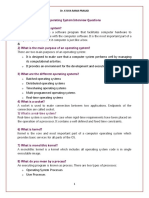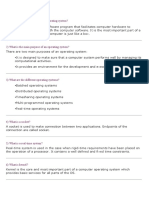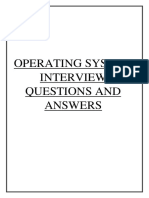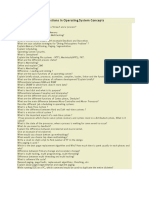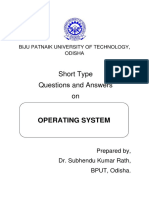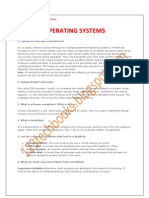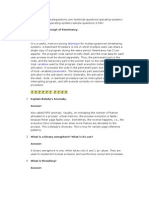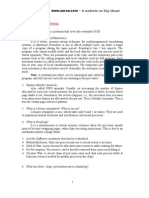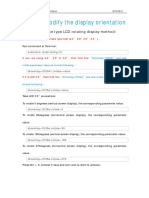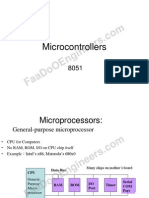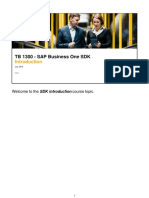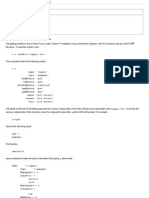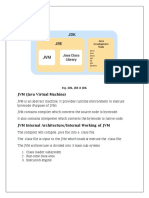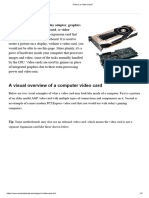0% found this document useful (0 votes)
19 views3 pagesOS Interview Questions
The document outlines key concepts related to operating systems, including process states, reentrancy, paging, scheduling algorithms like FCFS, and deadlock conditions. It also discusses spooling, semaphores, multithreaded programming advantages, system calls, process control blocks, context switching, and methods for handling deadlocks. Additionally, it explains the importance of paging as a storage mechanism in memory management.
Uploaded by
dwivedialokCopyright
© © All Rights Reserved
We take content rights seriously. If you suspect this is your content, claim it here.
Available Formats
Download as DOCX, PDF, TXT or read online on Scribd
0% found this document useful (0 votes)
19 views3 pagesOS Interview Questions
The document outlines key concepts related to operating systems, including process states, reentrancy, paging, scheduling algorithms like FCFS, and deadlock conditions. It also discusses spooling, semaphores, multithreaded programming advantages, system calls, process control blocks, context switching, and methods for handling deadlocks. Additionally, it explains the importance of paging as a storage mechanism in memory management.
Uploaded by
dwivedialokCopyright
© © All Rights Reserved
We take content rights seriously. If you suspect this is your content, claim it here.
Available Formats
Download as DOCX, PDF, TXT or read online on Scribd
/ 3




